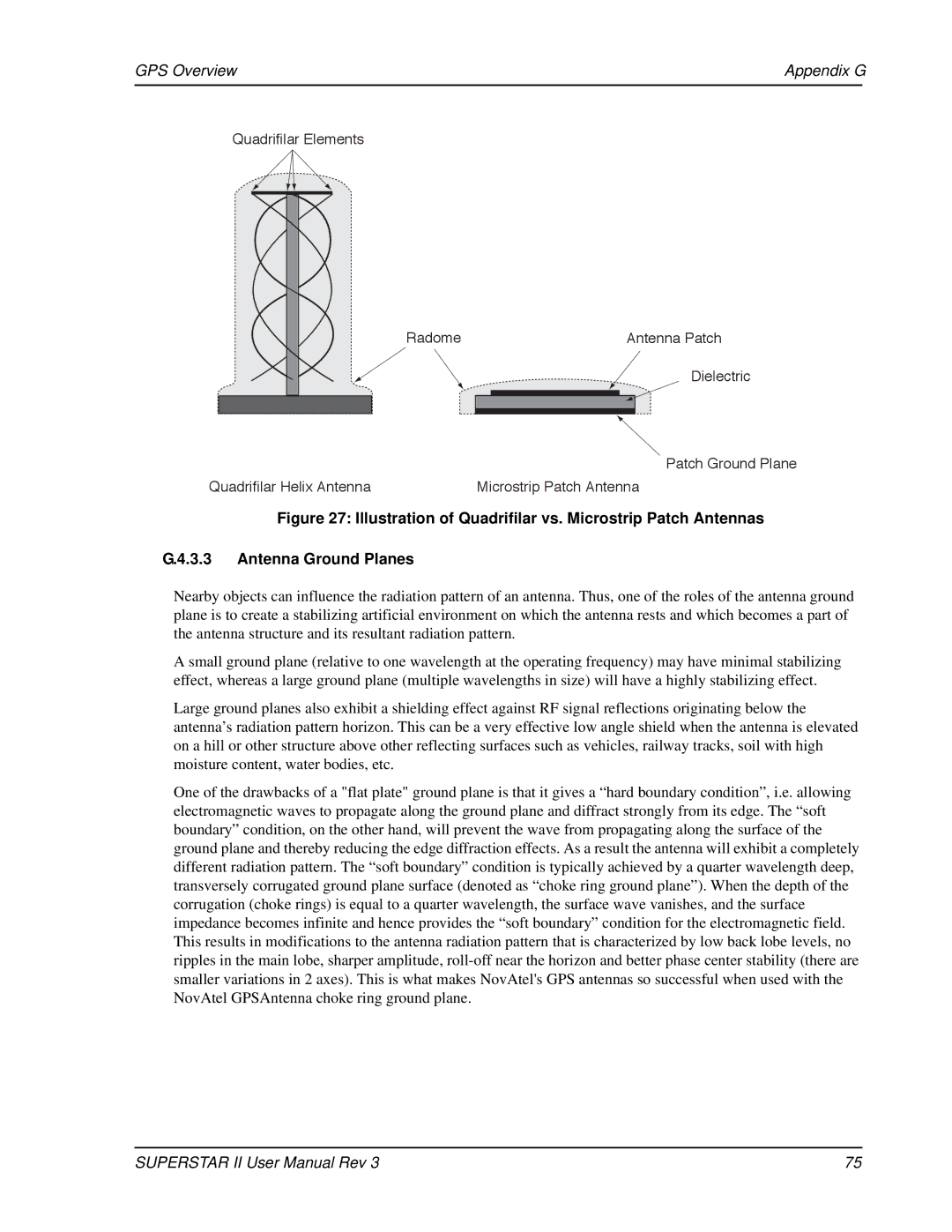
GPS Overview | Appendix G | |
|
|
|
Quadrifilar Elements
Radome | Antenna Patch |
Dielectric
Patch Ground Plane
Quadrifilar Helix Antenna | Microstrip Patch Antenna |
Figure 27: Illustration of Quadrifilar vs. Microstrip Patch Antennas
G.4.3.3 Antenna Ground Planes
Nearby objects can influence the radiation pattern of an antenna. Thus, one of the roles of the antenna ground plane is to create a stabilizing artificial environment on which the antenna rests and which becomes a part of the antenna structure and its resultant radiation pattern.
A small ground plane (relative to one wavelength at the operating frequency) may have minimal stabilizing effect, whereas a large ground plane (multiple wavelengths in size) will have a highly stabilizing effect.
Large ground planes also exhibit a shielding effect against RF signal reflections originating below the antenna’s radiation pattern horizon. This can be a very effective low angle shield when the antenna is elevated on a hill or other structure above other reflecting surfaces such as vehicles, railway tracks, soil with high moisture content, water bodies, etc.
One of the drawbacks of a "flat plate" ground plane is that it gives a “hard boundary condition”, i.e. allowing electromagnetic waves to propagate along the ground plane and diffract strongly from its edge. The “soft boundary” condition, on the other hand, will prevent the wave from propagating along the surface of the ground plane and thereby reducing the edge diffraction effects. As a result the antenna will exhibit a completely different radiation pattern. The “soft boundary” condition is typically achieved by a quarter wavelength deep, transversely corrugated ground plane surface (denoted as “choke ring ground plane”). When the depth of the corrugation (choke rings) is equal to a quarter wavelength, the surface wave vanishes, and the surface impedance becomes infinite and hence provides the “soft boundary” condition for the electromagnetic field. This results in modifications to the antenna radiation pattern that is characterized by low back lobe levels, no ripples in the main lobe, sharper amplitude,
SUPERSTAR II User Manual Rev 3 | 75 |
